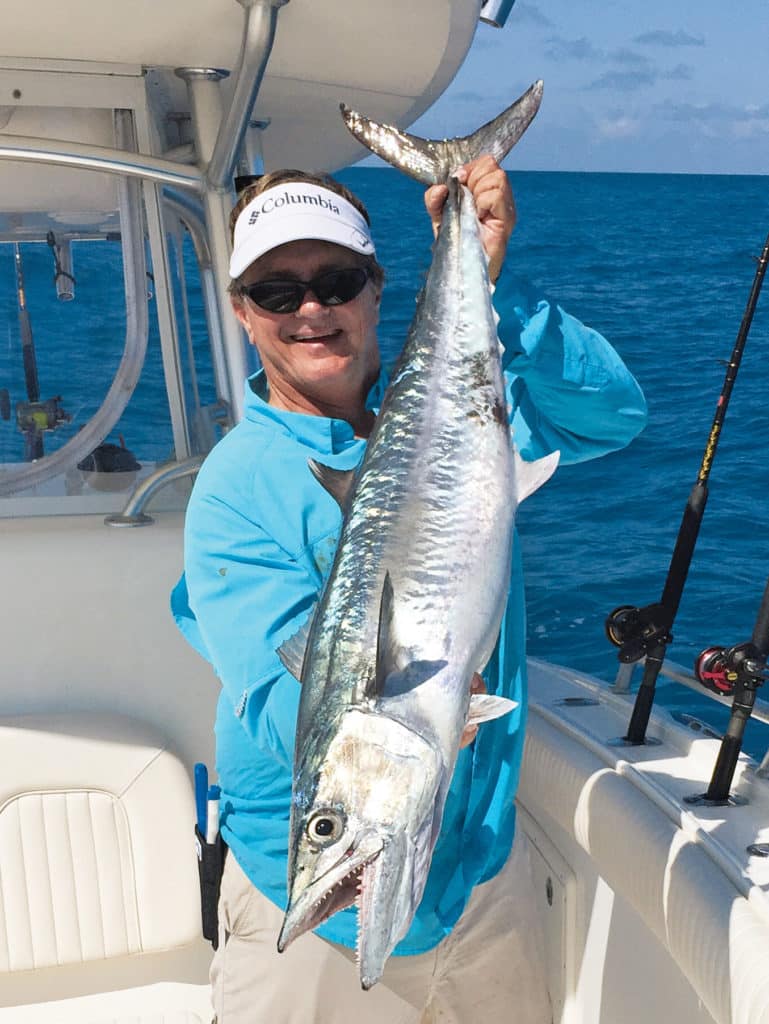
Successfully drifting or slow-trolling live baits for pelagics requires covering a large surface area of water as well as different depths. When kite-fishing, we’ll typically have live baits at the surface downwind of our boat and three flat-line baits on the upwind side between 100 and 400 feet out. We deploy a weighted bait (egg sinker attached to line with a rubber band) 30 feet down and another halfway to the bottom. For example, when in 180 feet of water, the deep bait is at approximately 90 feet. Once we slide in shallower (150 to 80 feet), we lower the deep bait to near 10 feet off bottom and the shallow one to half the depth. So, in 120 feet of water, the high bait is now at 60 feet, and the deep bait is around 110 feet. It’s a surefire way to catch not only more sailfish and dolphin, but also wahoo, kingfish, cobia and a host of bottomfish.

Many bottom and pelagic game fish fall for flutter jigs and their erratic, injured-baitfish action. Yet, wahoo, king mackerel, bluefish and barracuda often earn their freedom — and cost you money — by severing those assist hooks.
To thwart this, I rerig mine. I just remove the stock assist hook and cord and replace them with 50-pound test titanium wire, and — on my 5-ounce Williamson Flutter Jigs — a 5/0 VMC live-bait style J hook. Keeping the hook dangling near the end of the jig, I attach the cable to the solid ring at the head of the iron. Next, I’ll attach 24 inches of 50-pound titanium wire to that same solid ring, capping off the lead wire with a small barrel swivel to which I tie the fishing line. Titanium wire is flexible, impervious to kinking, and strong for its small diameter. In short: It’s perfect for flutter jigs.

Trolling in rough seas can be challenging, but key adjustments ensure your spread’s lifelike action. Weighted baits should take precedence because they run below the surface and track and stay in the water better than baits skipping on top.
Transom release clips and outrigger clips positioned halfway up their poles reduce the fishing line angle of entry into the water, and when lines closely parallel the surface, baits are more likely to stay in the water. Positioning baits farther back than normal also helps.
Tweak distances based on wind direction and speed. And drop the downwind baits farther back than the upwind lines. This keeps them from crossing and prevents tangles.









